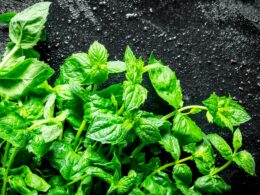In This Article Show
Lettuce, with its various types like romaine, iceberg, and butterhead, is an excellent choice for beginners due to its quick growth and minimal care requirements. In this guide, I’ll walk you through five simple steps to cultivate fresh lettuce right from your home—whether you have a sprawling backyard or just a small balcony space. This approach ensures you enjoy fresh, pesticide-free salads right at your table, and also helps you save on grocery bills.
How to Grow Lettuce At Home
Let’s get started on this green journey, and I’ll show you how easy and satisfying it is to grow your food, even with limited space and experience.
1. Choosing the Right Lettuce Variety
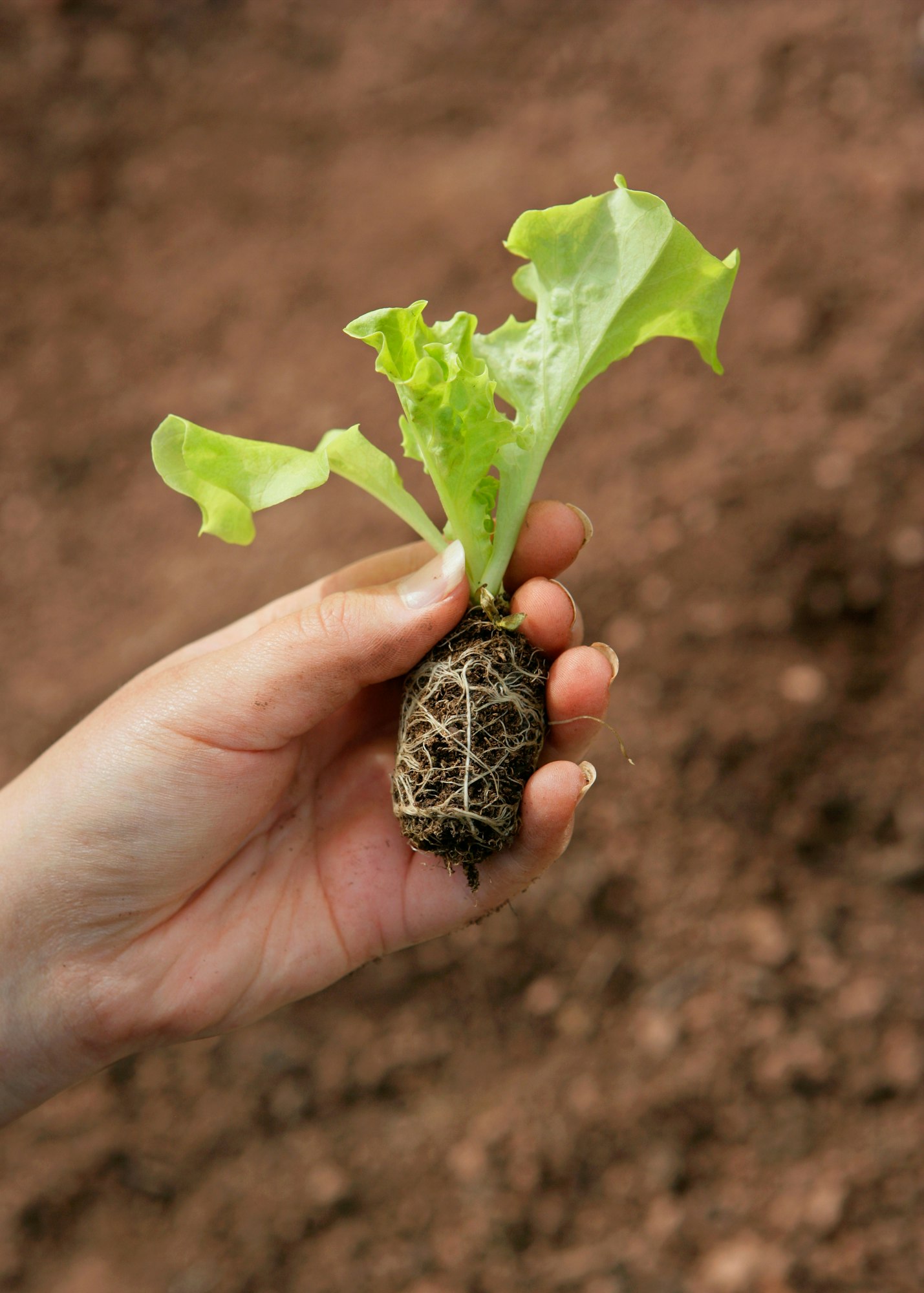
Choosing the right lettuce variety is crucial for success in your garden, especially as a beginner. Lettuce comes in a range of types, each with its unique taste and texture. The most popular ones include crisp and tall romaine, the tightly packed iceberg, and the soft, tender leaves of butterhead. There are other varieties like oakleaf and lollo rosso, which offer different shapes and colors for your garden and plate.
When selecting the best variety for your home garden, consider your local climate and the space you have available. For instance, romaine and iceberg do well in cooler climates and need more space to grow due to their larger size, while butterhead and oakleaf can thrive in slightly warmer conditions and are perfect for container gardening due to their compact growth.
Assess the sunlight availability in your growing area as lettuce generally needs about 6 hours of direct sunlight per day. By matching the lettuce variety to your specific conditions, you’ll ensure a bountiful harvest and a rewarding gardening experience.
2. Preparing Your Growing Space
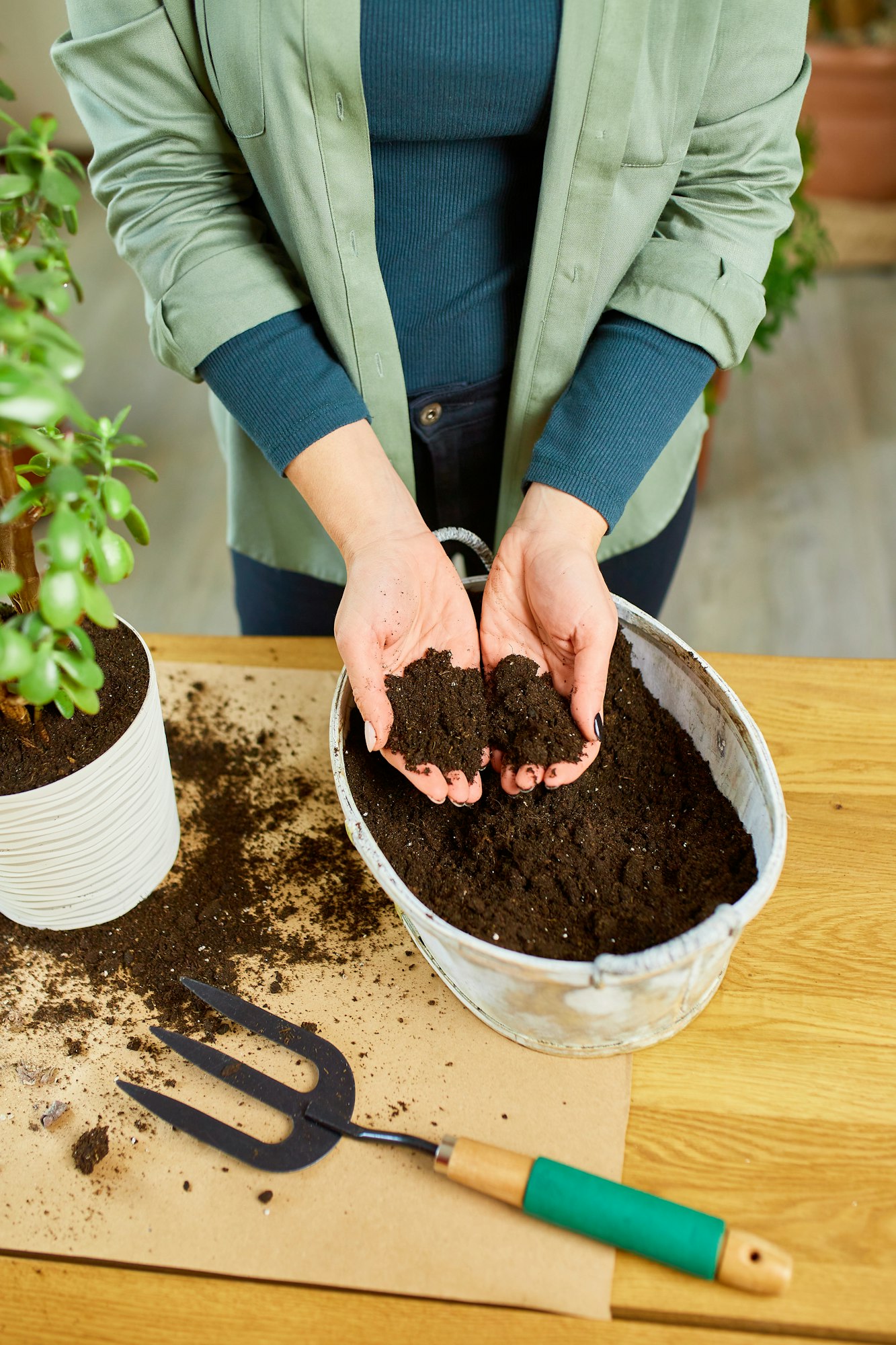
Preparing your growing space effectively is key to successful lettuce cultivation. Whether you choose to plant indoors or outdoors, each setting offers unique benefits and requires specific preparations.
Get Gardening For Beginners
Our new EBOOK shows newcomers and green thumbs alike a step by step guide to growing the garden of their dreams.
Indoor vs. Outdoor Options
If you’re limited on outdoor space or want to keep gardening year-round, indoor gardening with containers is an excellent choice. Lettuce thrives in pots, grow bags, or even window boxes, provided they have enough depth for root growth—about 6 to 8 inches deep.
Outdoors, and garden beds allow for larger-scale production and can accommodate more varieties. Both settings require strategic placement to ensure adequate sunlight.
Soil Preparation
Lettuce prefers a loamy, well-draining soil rich in organic matter. Whether you’re filling containers or preparing garden beds, mix in plenty of compost or aged manure to both nourish your plants and improve soil structure. For container gardening, consider a commercial potting mix designed for vegetables, which ensures good drainage and aeration.
Importance of Good Drainage and Sunlight
Proper drainage is crucial to prevent root rot and other water-related issues. Ensure your containers have drainage holes, and for garden beds, consider raised beds or amend the soil with sand or perlite to improve water flow.
Get Gardening For Beginners
Our new EBOOK shows newcomers and green thumbs alike a step by step guide to growing the garden of their dreams.
Lettuce needs about 6 hours of direct sunlight per day; however, in hotter climates, some afternoon shade can prevent overheating and bolting (going to seed prematurely). This balance will promote robust growth and lead to a successful harvest of crisp, healthy lettuce leaves.
3. Planting the Seeds
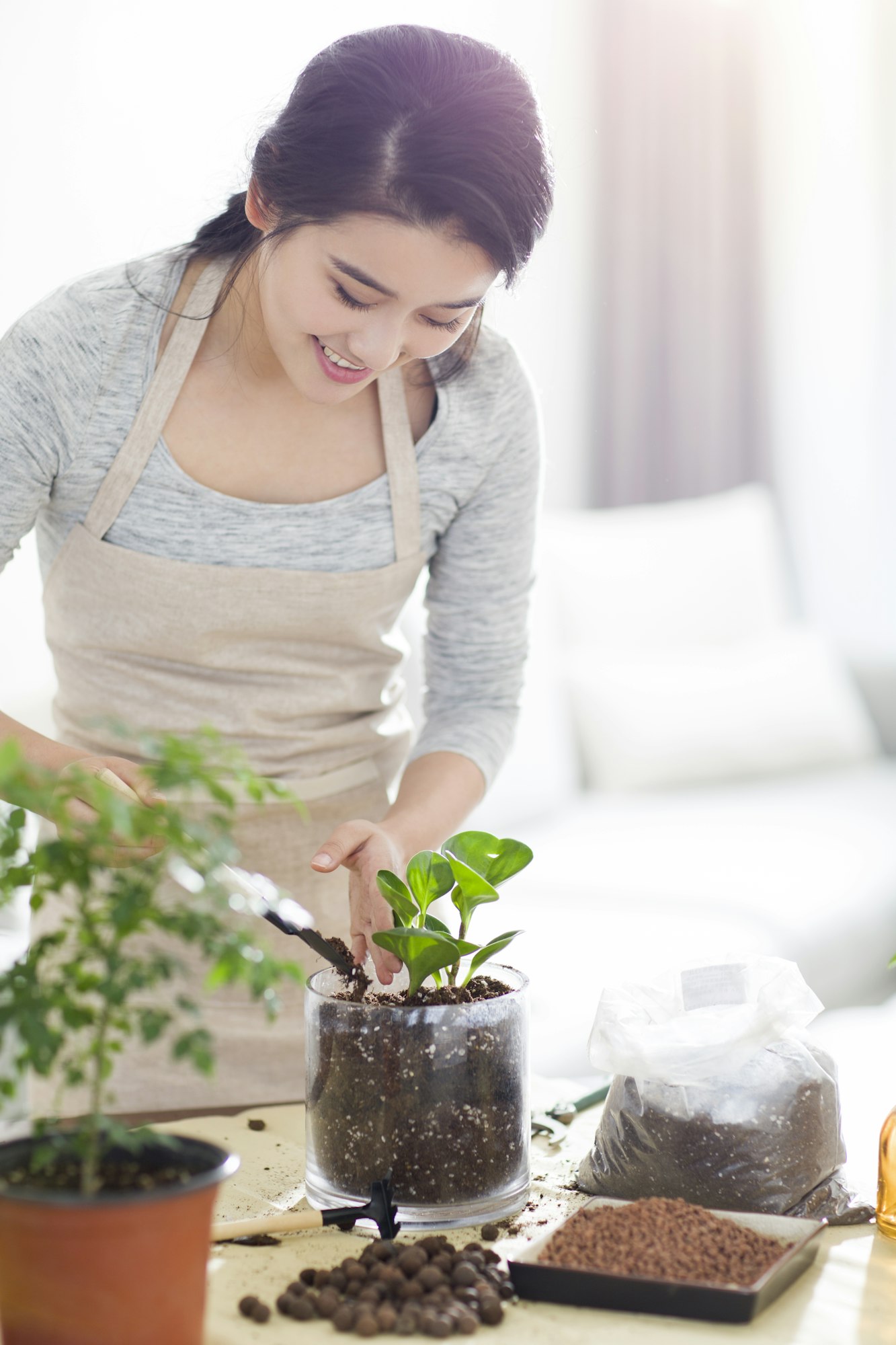
Planting lettuce seeds properly is straightforward and rewarding, making it an ideal task for beginner gardeners. Here’s a step-by-step guide to help you get started:
Step-by-Step Instructions on How to Sow Lettuce Seeds
- Prepare the Soil: Before planting, ensure your soil is loose and free of large clumps or debris. Smooth the surface gently with a rake.
- Create Shallow Rows: Using a stick or the back of a rake handle, make shallow rows about 1/4 inch deep and 12 inches apart in your prepared soil or container.
- Sow the Seeds: Sprinkle the lettuce seeds lightly along the rows. Because lettuce seeds are small, try to distribute them as evenly as possible, but don’t worry if it’s not perfect—thinning can occur later.
- Cover Lightly: Gently cover the seeds with a thin layer of soil. If using a potting mix, you can also lightly press down to ensure good seed-to-soil contact without compacting the soil.
- Water Gently: Use a fine mist or a watering can with a gentle spray to moisten the soil without disturbing the seeds. Keep the soil consistently moist until germination.
Best Practices for Seed Spacing and Depth
- Depth: Lettuce seeds should be sown at a shallow depth of about 1/4 inch. Planting them too deep can inhibit germination.
- Spacing: Initially, you can sow seeds closer together (about 1 inch apart) and thin them out later as they grow. This thinning is essential as it prevents overcrowding and ensures adequate air circulation around the plants.
Best Time of Year to Start Planting
- Cooler Climates: In cooler regions, you can start sowing lettuce seeds in early spring, as soon as the soil can be worked. For a continuous harvest, plant a few seeds every two weeks throughout the spring and early summer.
- Warmer Climates: If you live in a warmer climate, it’s best to plant lettuce in the fall or winter, as lettuce prefers cooler growing conditions and can bolt or turn bitter in hot weather.
4. Caring for Your Lettuce
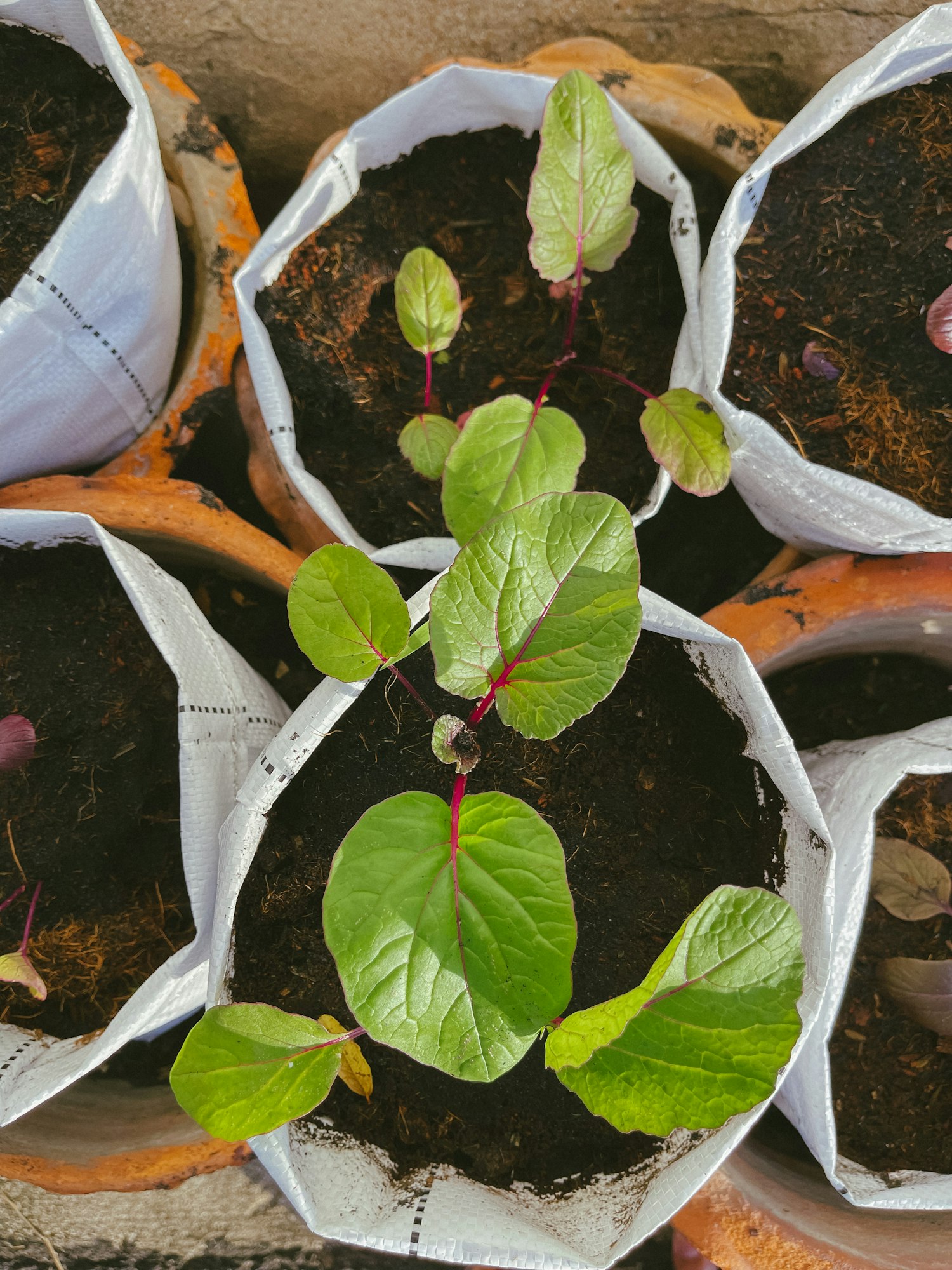
Caring for your lettuce properly ensures healthy growth and a plentiful harvest. Here’s how to manage watering, fertilizing, and pest control effectively:
Watering
Lettuce needs consistent moisture to grow crisp, tender leaves. It is particularly important because lettuce is over 90% water. Here’s how to water your lettuce:
- How Much and How Often: Water your lettuce plants enough to keep the soil consistently moist but not soggy. Typically, this means watering at least once a day during dry, hot periods, especially if you’re growing lettuce in containers. In cooler weather or less sunny conditions, watering every two to three days may suffice.
- Method: Use a gentle spray to avoid disturbing the soil or damaging the fragile leaves. Early morning is the best time to water, allowing the leaves to dry throughout the day, which helps prevent fungal diseases.
Fertilizing
Lettuce benefits from regular feeding but requires only moderate amounts of fertilizer.
- Types of Fertilizers: Use a balanced, water-soluble fertilizer (like a 10-10-10 NPK ratio) or an organic option such as fish emulsion or compost tea. These provide a gentle, slow release of nutrients that support leaf development without overwhelming the plants.
- Frequency: Fertilize your lettuce every two to four weeks. This will help sustain growth without promoting too rapid of growth, which can impact taste and texture.
Pest Management
Lettuce can attract several pests, but you can manage them effectively using natural methods:
- Physical Barriers: Use floating row covers to protect lettuce from common pests like aphids and rabbits. These covers allow light and water in but keep pests out.
- Natural Predators: Encourage beneficial insects like ladybugs and lacewings, which prey on harmful pests. Planting flowers nearby or maintaining a small habitat garden can attract these beneficial insects.
- Manual Removal: Check your plants regularly for pests and manually remove any that you find. This is especially effective for larger pests like caterpillars.
- Homemade Sprays: Neem oil or a mild soap solution can be sprayed directly onto the plants to control smaller infestations, especially for aphids and small beetles.
5. Harvesting Your Lettuce
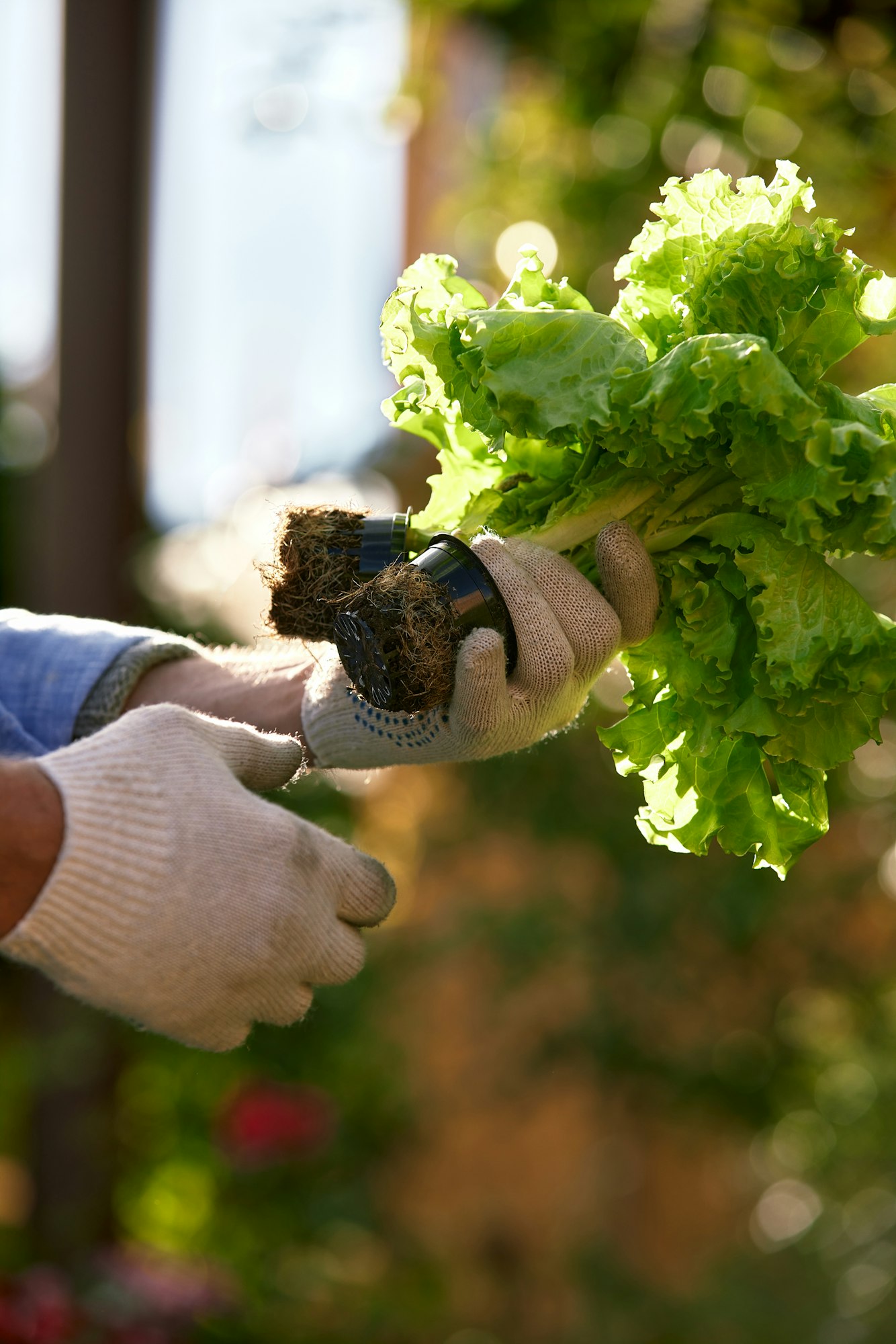
Harvesting your lettuce at the right time not only ensures the best flavor and texture but can also prolong the productivity of your plants. Here’s how to recognize the right time to harvest, the method for harvesting that encourages continued growth, and tips for storing your lettuce to maximize freshness.
Signs That Your Lettuce Is Ready to Harvest
- Size: Most lettuce varieties are ready to harvest when they reach their full size but are still tender, before they start to harden or bolt (flower). For leaf lettuces, this usually means leaves are about 4 to 6 inches long.
- Appearance: Look for crisp, well-formed heads or robust leaves with a vibrant color. Avoid harvesting if the leaves look wilted or have started to yellow, which could indicate over-maturity or stress.
How to Harvest Lettuce So the Plant Keeps Producing
- Leaf Lettuce: Use the “cut-and-come-again” method. Cut the outer leaves about one inch above the crown of the plant, allowing the inner leaves to continue growing. This method can yield multiple harvests from the same plant throughout the growing season.
- Head Lettuce: For types that form heads, the harvesting method depends on whether you want to harvest the whole head or just part of it. If harvesting the whole head, cut it off at the base with a sharp knife.
Tips for Storing and Using Your Homegrown Lettuce
- Washing and Drying: After harvesting, wash your lettuce leaves gently under cool water. Shake off excess moisture and use a salad spinner to dry the leaves. This helps remove any dirt and potential pests.
- Storing: Store lettuce in the refrigerator in a plastic bag or an airtight container. Placing a paper towel inside the bag or container can help absorb excess moisture and keep your lettuce crisp for longer.
- Using: Freshly harvested lettuce is perfect for salads and sandwiches. Try using different types of lettuce you’ve grown to create a blend of textures and flavors. Additionally, consider quick uses like adding them to smoothies or wilting them slightly for wraps.
By following these harvesting and storage tips, you can enjoy the freshest possible lettuce from your garden and extend the harvesting period, ensuring a steady supply of fresh greens.









